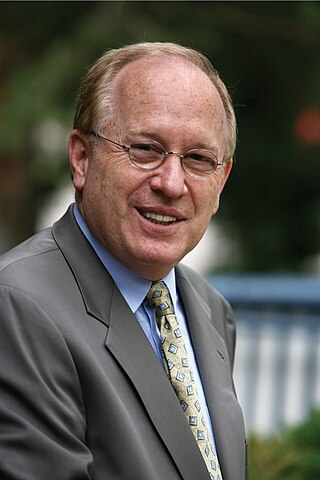Related Research Articles

Philatelic investment is investment in collectible postage stamps for the purpose of realizing a profit. Philatelic investment was popular during the 1970s but then fell out of favour following a speculative bubble and prices of rare stamps took many years to recover.
The 2003 mutual fund scandal was the result of the discovery of illegal late trading and market timing practices on the part of certain hedge fund and mutual fund companies.

Fidelity Investments, commonly referred to as Fidelity, earlier as Fidelity Management & Research or FMR, is an American multinational financial services corporation based in Boston, Massachusetts. The company was established in 1946 and is one of the largest asset managers in the world with $4.3 trillion in assets under management, and, as of December 2022, their assets under administration amount to $10.3 trillion. Fidelity Investments operates a brokerage firm, manages a large family of mutual funds, provides fund distribution and investment advice, retirement services, index funds, wealth management, securities execution and clearance, asset custody, and life insurance.

Robert Alphonso Taft III is an American politician and attorney who served as the 67th governor of Ohio from 1999 to 2007. A member of the Taft political dynasty and Republican Party, Taft previously served in the Ohio House of Representatives, then as Hamilton County commissioner, and as Ohio Secretary of State under governor George Voinovich.

The Ohio Turnpike, officially the James W. Shocknessy Ohio Turnpike, is a 241.26-mile-long (388.27 km) controlled-access toll highway in the U.S. state of Ohio, serving as a primary corridor between Chicago and Pittsburgh. The road runs east–west in the northern section of the state, with the western end at the Indiana–Ohio border near Edon where it meets the Indiana Toll Road, and the eastern end at the Ohio–Pennsylvania border near Petersburg, where it meets the Pennsylvania Turnpike. The road is owned and maintained by the Ohio Turnpike and Infrastructure Commission (OTIC), headquartered in Berea.

The Ohio Republican Party is the Ohio affiliate of the Republican Party. It was founded in Columbus, Ohio, in 1854. It is currently the state's favored party, controlling the majority of Ohio's U.S. House seats, one of its two U.S. Senate seats, the governorship, and has supermajorities in both houses of the state legislature.

Marc Dann is an American former politician of the Democratic Party, who served as the Attorney General of Ohio from 2007 until his resignation on May 14, 2008.

Bruce Edward Johnson is an American lawyer and Republican politician who was appointed the State of Ohio's 63rd lieutenant governor on January 5, 2005, to complete an unexpired term. Johnson concurrently served as Director of the Ohio Department of Development.

The Blade, also known as the Toledo Blade, is a newspaper in Toledo, Ohio published daily online and printed Thursday and Sunday by Block Communications. The newspaper was first published on December 19, 1835.
Raymond James Financial, Inc. is an American multinational independent investment bank and financial services company providing financial services to individuals, corporations, and municipalities through its subsidiary companies that engage primarily in investment and financial planning, in addition to investment banking and asset management. Headquartered in St. Petersburg, Florida, Raymond James is one of the largest banking institutions in the United States.

The 2006 Ohio gubernatorial election was held on November 7, 2006, and was a race for the Governor and Lieutenant Governor of Ohio. Incumbent Governor Bob Taft could not run for re-election, because Ohio governors are limited to two consecutive terms in office. The election was held concurrently with a U.S. Senate election. The general election for governor pitted Ohio Secretary of State Ken Blackwell, the Republican nominee, against United States Congressman Ted Strickland of Ohio's 6th congressional district, the Democratic nominee. Their running mates were former Ohio Attorney General Lee Fisher on the Democratic ticket and State Representative Tom Raga on the Republican ticket.
Thomas W. Noe is a former Ohio Republican party fundraiser and activist, guilty of money laundering for the 2004 Bush-Cheney campaign and of theft and corruption in the "Coingate scandal". A longtime resident of Toledo, Ohio, Noe and his wife, Bernadette, held several party positions and minor offices within the government of Ohio. He was also a prominent Republican fundraiser and served as chairman of the 2004 Bush-Cheney election campaign in Northwest Ohio and chairman of the Lucas County Republican party. Noe was also an avid coin dealer and owned various coin dealing companies, such as Capital Coin and Vintage Coins & Collectibles, as well as their subsidiaries.
Bush Pioneers are people who gathered $100,000 for George W. Bush's 2000 or 2004 presidential campaign. Two new levels, Bush Rangers and Super Rangers, were bestowed upon supporters who gathered $200,000+ or $300,000+, respectively, for the 2004 campaign, after the 2002 McCain–Feingold campaign finance law raised hard money contribution limits. This was done through the practice of "bundling" contributions. There were 221 Rangers and 327 Pioneers in the 2004 campaign and 241 Pioneers in the 2000 campaign. A fourth level, Bush Mavericks, was used to identify fundraisers under 40 years of age who bundled more than $50,000.
George Lawrence Forbes is an American politician of the Democratic Party. From 1974 to 1989, Forbes served as president of the Cleveland City Council. He is the former President of the Cleveland NAACP and is semi-retired from practicing law.

The Federal Correctional Institution, Edgefield is a medium-security United States federal prison for male inmates in South Carolina. It is operated by the Federal Bureau of Prisons, a division of the United States Department of Justice. The facility also has an adjacent satellite prison camp for minimum-security male offenders, which houses between 500 and 549 inmates.

Craig S. Morford is an American attorney and former acting United States Deputy Attorney General.
The Ohio Bureau of Workers' Compensation provides medical and compensation benefits for work-related injuries, diseases and deaths. It was founded in 1912. With assets under management of more than $29 billion, it is the largest state-operated and second largest overall provider of workers’ compensation insurance in the United States.
Shawn D. Baldwin is in federal prison for defrauding investors of $10,000,000 from 2006-2017. He was an international financier, trader and investor. He was the chairman of AIA Group (AIA), an alternative investment firm based in Chicago, prior to being indicted for defrauding multiple investors from 2006-2017.

Barry Stuppler is an American coin dealer and former President of the American Numismatic Association (ANA). In 2003, he served on the California State Quarter Commission that created the California State Quarter.
Donna M. Owens is an American Republican politician who served as the mayor of Toledo, Ohio, from 1983 until 1989. As of 2022, she is the most recent person elected mayor of Toledo only as a Republican.
References
- ↑ Blade's 'Coingate' probe wins investigation award, Toledo Blade, September 16, 2006.
- ↑ Tom Wilkinson (2006-11-07). "Prosecutor tabs Noe 'swindler and thief' in closing; defense says evidence is lacking: Jury to begin deliberations tomorrow". Toledo Blade.
- ↑ Coin dealer admits illegal donations, Associated Press, May 31, 2006.
- 1 2 Mark Niquette (2006-02-14). "53 counts for Noe". The Columbus Dispatch. Archived from the original on 2006-02-23. Retrieved 2011-03-12.
- ↑ Mike Wilkinson and James Drew (April 3, 2005). "Ohio agency sinks millions into rare coins". Toledo Blade. Archived from the original on February 12, 2008.
- ↑ "Ohio Supreme Court panel backs reprimand for Taft: Justices to decide possible penalty in ethics case". Toledo Blade. 2006-08-17.
- ↑ "Noe charges". The Columbus Dispatch. 2006-02-14. Retrieved 2011-03-12.
- ↑ "Jury Finds Tom Noe Guilty". WTOL-TV Toledo. 2006-11-13. Archived from the original on 2007-05-16. Retrieved 2006-11-13.
- ↑ Mike Wilkinson and Steve Eder (2006-11-13). "Noe guilty of 29 felony counts: Convictions include racketeering, theft, forgery". Toledo Blade. Archived from the original on September 19, 2008.
- ↑ "Noe Indictment" (PDF). Archived from the original (PDF) on 2011-05-22. Retrieved 2006-02-21.
- ↑ Mike Wilkinson and Steve Eder (2006-11-20). "Noe is sentenced to 18 years in state prison". Toledo Blade.